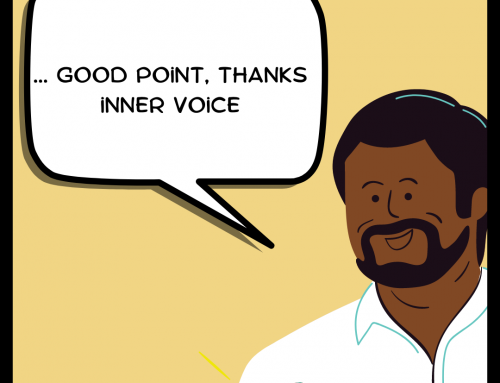
Attachment theory, developed by John Bowlby and expanded by Mary Ainsworth, offers a profound understanding of how early relationships with caregivers shape our emotional and relational lives. Today, attachment theory is a vital tool in therapy, helping clients navigate and heal from relational and emotional difficulties. This article will explore how to use attachment theory in therapy, providing practical insights and strategies for fostering secure attachments and improving mental health.
Understanding Attachment Theory
Attachment theory posits that our earliest bonds with caregivers form the blueprint for our future relationships and emotional regulation. These early attachments can be secure or insecure, influencing our behaviour and emotional health.
- Secure Attachment is developed when caregivers are consistently responsive and tuned to a child’s needs. Individuals with secure Attachment tend to have healthy relationships and emotional resilience.
- Insecure Attachment: Arises from inconsistent or unresponsive caregiving.
Attachment Theory Styles
– Secure Attachment 😊: Formed when caregivers are consistently responsive and nurturing. This style fosters trust and emotional resilience in individuals, leading to healthy, balanced relationships where individuals feel comfortable with intimacy and independence.
– Anxious Attachment 😟: Characterised by a fear of abandonment and a constant need for reassurance. Individuals with this style often seek closeness and approval but may be preoccupied with worries about their relationships, leading to clinginess and dependency.
– Dismissive Avoidant Attachment 😶: Marked by a reluctance to trust and difficulty in forming close relationships. People with this style tend to maintain emotional distance and prioritise self-reliance, often struggling with intimacy and expressing emotions.
– Disorganised/Fearful Attachment 😖: Resulting from traumatic or abusive experiences, this style leads to confusion and fear in relationships. Individuals exhibit contradictory behaviours, desiring closeness but also feeling scared or distrustful. They often display a combination of anxious and avoidant tendencies, leading to ambivalence and fear in their interactions (Bartholomew & Horowitz, 1991).
Understanding these attachment styles can provide valuable insights into our relational patterns and emotional responses, guiding therapeutic interventions to foster secure Attachment.
Applying Attachment Theory in Therapy
-
Assessment and Awareness
– Reflect on Early Relationships: Consider how your early experiences with caregivers may have shaped your attachment style.
– Recognise Patterns: Identify relationship patterns that may stem from your attachment style.
-
Building a Therapeutic Alliance
For Clients:
Engage Openly: Develop trust in your therapist by openly sharing your thoughts and feelings.
-
Addressing Insecure Attachment
For Clients:
Understand Triggers: Identify situations that trigger your attachment-related anxieties or avoidance.
Practice Self-Compassion: Cultivate self-compassion and challenge negative self-perceptions related to insecure Attachment.
-
Developing Secure Attachment
For Clients:
Practice Mindfulness: Use mindfulness techniques to stay present and regulate emotions, enhancing your capacity for secure Attachment.
Build Healthy Connections: Find and nurture relationships with support, trust, and emotional safety.
Practical Strategies for Clients
-
Mindful Communication
Express Needs Clearly: Practice expressing your needs and emotions clearly and calmly in relationships.
Active Listening: Engage in active listening, showing empathy and understanding towards others.
-
Self-reflection and Journaling
Reflect on Relationships: Regularly reflect on your relationships and interactions, noting patterns and triggers related to your attachment style.
Journal: Keep a journal to explore your thoughts and feelings, helping you gain insights into your attachment behaviours.
-
Therapeutic Techniques
Emotionally Focused Therapy (EFT): Engage in EFT to address attachment-related issues and improve emotional connection in relationships.
Attachment-Based Family Therapy (ABFT): If family dynamics contribute to attachment challenges, participate in ABFT.
Conclusion
Attachment theory offers invaluable insights into our emotional and relational lives. By understanding and addressing attachment styles in therapy, clients can work towards healthier, more secure relationships and improved mental health. Integrating attachment theory into your therapeutic journey can foster deeper self-awareness, healing, and connection. Whether you are beginning therapy or seeking to deepen your understanding of yourself, exploring attachment theory can be a transformative step towards emotional well-being.
References
- Ainsworth, M. D. S., Blehar, M. C., Waters, E., & Wall, S. (1978). **Patterns of Attachment: A Psychological Study of the Strange Situation**. Lawrence Erlbaum Associates.
- Bartholomew, K., & Horowitz, L. M. (1991). **Attachment styles among young adults: A test of a four-category model**. Journal of Personality and Social Psychology, 61(2), 226–244. https://doi.org/10.1037/0022-3514.61.2.226
- Bowlby, J. (1969). **Attachment and Loss: Volume I. Attachment**. Basic Books.
- Main, M., & Solomon, J. (1986). **Discovery of a new, insecure-disorganised/disoriented attachment pattern**. In T. B. Brazelton & M. W. Yogman (Eds.), Affective development in infancy (pp. 95–124). Ablex Publishing.





